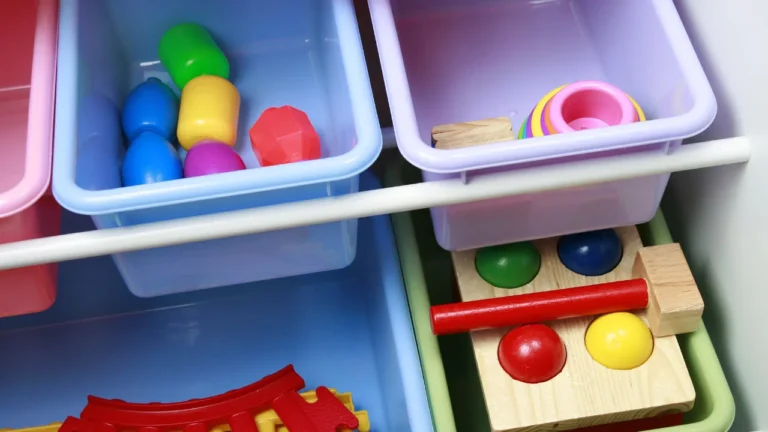Secrets to Effortlessly Balancing Work and Parenting: A Guide for Busy Parents

In the whirlwind of modern life, balancing the demands of work and parenting can feel like an insurmountable challenge. As the lines between professional duties and family responsibilities blur, especially with the rise of remote work, maintaining harmony between these two essential roles becomes even more crucial.
Creating a seamless transition from work mode to parent mode is key to achieving a healthy work-life balance. Without this balance, stress levels can soar, productivity can plummet, and relationships with loved ones can suffer.
In this article, we’ll explore expert tips to help you master this delicate dance. From setting clear boundaries and practicing mindfulness to crafting effective routines and prioritizing self-care, these strategies will empower you to navigate your dual roles with grace.
Plus, we’ll go into how technology can be a helpful ally in this journey. Join us as we uncover practical solutions to help you thrive both at work and at home.
Explanation of the Importance of Switching Gears from Work Mode to Parent Mode
The importance of switching gears from work mode to parent mode cannot be overstated. It is crucial for maintaining good mental health and overall well-being. The lines between professional life and personal life are blurring more than ever before due to remote working arrangements.
Without proper separation between these two areas of life, one risks burnout or fatigue. Work-related stressors could snowball into anxiety or depression when brought home after hours.
Additionally, it can put a strain on relationships with family members if they feel neglected due to excessive time spent in the office or virtual meetings.
By setting clear boundaries between work-related tasks and parenting activities while at home or scheduling specific times for each activity – one is less likely to go overboard with either activity at any given time.
Brief Overview of the Outline
This article outlines several strategies that can help you switch gears from work mode to parent mode effectively:
Firstly, it suggests creating clear boundaries between your professional responsibilities and your role as a caretaker – this includes finding ways to separate your workspace from your home life, as well as establishing specific times for work and parenting activities.
Secondly, it encourages practicing mindfulness techniques before transitioning from one role to another – which can help clear any lingering thoughts or stressors from your workday. Thirdly, this article stresses the importance of creating a routine that works for you and your family.
By planning out your day with specific tasks and activities, you can manage both work and parenting responsibilities more effectively.
Fourthly, it recommends prioritizing self-care activities such as getting enough sleep, eating well-balanced meals, exercising routines, or engaging in hobbies that bring joy into your life.
Utilizing technology effectively can help one stay connected with their colleagues while at home but also set boundaries when necessary. – by following these recommendations and taking the time to switch gears between each role effectively – one can ensure a happy balance between professional responsibilities and family life.

Set a Clear Boundary Between Work and Parenting
Create a Physical Separation Between Work and Home Life
One of the most effective ways to set boundaries between work and parenting is to create a physical separation between the two. This means having a designated workspace that is separate from areas where you spend time with your family.
Whether it’s an office, spare bedroom, or corner of the living room, having a defined workspace will help you mentally shift from work mode to parent mode when it’s time. Consider investing in some office equipment like a desk, chair, and filing cabinets that are specific to your workspace.
This can help you feel more professional and productive in your work environment. Avoid working on the couch or in bed since these areas are associated with relaxation rather than productivity.
Establish Specific Times for Work and Parenting Activities
Another way to set boundaries is to establish specific times for work and parenting activities. By creating a schedule that includes set times for both, you can ensure that you are dedicating enough time to each area of your life without neglecting either one.
When deciding on your schedule, consider any important deadlines or meetings you have at work as well as any school schedules or extracurricular activities for your children. You may need to adjust your schedule depending on the day or week but having a general routine will help you stay organized.
Additionally, communicate this schedule with anyone who may be impacted by it such as coworkers or family members. This helps them understand when you are available for work-related tasks versus parenting responsibilities.
Overall, setting clear boundaries between work and parenting requires intentional effort but it’s necessary for maintaining balance in both areas of life. By creating physical separation and establishing specific times for each activity, you can successfully switch gears between work mode and parent mode without sacrificing either one.
Practice mindfulness to transition effectively
Clear Your Mind Before Transitioning from Work to Parenting
Transitioning from work mode to parent mode can be challenging, especially when you have had a stressful day at work. The key to a successful transition is to clear your mind before you start engaging with your children. One way of doing this is by taking a few minutes to disconnect from work-related tasks and focus on yourself.
Start by finding a quiet place within your home where you can unwind without any distractions. Sit down in a comfortable position and close your eyes.
Allow yourself to take deep breaths, inhaling through your nose and exhaling through your mouth. Focus on each breath as it enters and leaves your body, letting go of any thoughts that may arise.
By doing this, you are allowing both your mind and body to relax and reset. You will be able to let go of the stresses of the day, allowing yourself the capacity for more joyous moments with your children.
Mindful Activities such as Deep Breathing or Meditation
Engaging in mindful activities such as deep breathing or meditation can help ease the transition from work mode into parenting mode. These activities help reduce stress levels while increasing focus so that we become more present in our interactions with our children.
Deep breathing involves inhaling deeply through the nose while counting up to four; hold for two seconds before exhaling slowly through the mouth while counting down from four again. Repeat this process five times before opening your eyes.
Meditation involves sitting quietly with no distractions and focusing on one thing like a word or an object for 10-15 minutes daily. Meditation helps calm our minds, heightens awareness levels, soothes anxiety symptoms & promotes mental clarity post-work hours.
Incorporating these mindful activities into everyday life routines will make it easier for individuals to switch gears from work to parenting mode. It will also promote healthy stress-coping mechanisms that improve our mental and physical well-being.
Practicing mindfulness can help us be more present with our children after a long day of work. It’s essential to take a few minutes to clear your mind before transitioning into parenting mode and engage in mindful activities like deep breathing or meditation for effective transitions.

Create a routine that works for you and your family
A routine is essential when it comes to balancing work and parenting. It helps to establish structure, consistency, and predictability.
Creating a routine that works for both you and your family will make the transition from work mode to parent mode smoother. Start by identifying the times of day when you are most productive at work and when your children need your attention the most.
For example, if you work better in the mornings, plan to schedule important work tasks during that time while your children are occupied with an activity or schoolwork. Next, identify activities that are important to you as a parent such as meal times, playtime with your children, or helping them with homework.
Make sure to schedule these into your daily routine so that you can prioritize them. Think about what works best for everyone in terms of scheduling.
If possible, aim for a consistent schedule every day of the week so that everyone knows what’s coming next. However, be flexible enough to adjust it accordingly based on any changes in priorities or emergencies that may arise.
Plan out your day with specific tasks and activities
To effectively manage both work and parenting responsibilities, planning is key. Creating a list of daily tasks can help keep you organized and focused on what needs to be accomplished each day.
Start with the most important tasks first while allocating time blocks for each task. You might also find it helpful to categorize tasks according to priority levels such as high-priority (urgent), medium-priority (important but not urgent), or low-priority (can wait).
This can help you avoid unnecessary stress by tackling urgent tasks first while allowing flexibility in non-urgent matters. When planning out activities for your children throughout the day try incorporating elements of fun whenever possible.
Activities can be educational, creative, or physical, but it’s important to keep your child engaged and stimulated. Make sure to schedule breaks for yourself and your children so that you can all recharge throughout the day.
Involve your children in creating a routine
Involving your children in creating a routine can help them understand how their day is structured and what they are expected to do. It also gives them a sense of ownership over their activities which could lead to more engagement.
Sit down with your children and explain why having a routine is important. Discuss the activities that need to be done during the day such as meal times, schoolwork, playtime, and bedtime.
Let them have input into their routines by choosing activities that they enjoy doing or tasks that they want to accomplish on their own. It’s essential to provide structure while also keeping things flexible enough so that you can adjust accordingly based on any changes in priorities or emergencies that may arise.
If you involve your children in creating the routine, it will make it easier for them to transition from work mode to parent mode as they have an understanding of what needs to be done and when. Remember that finding a balance between work and parenting takes time and effort.
The key is prioritizing tasks effectively while maintaining flexibility when needed. Creating a routine should help you maintain some control over daily activities while allowing for adjustments as needed.
Prioritize Self-Care
Take Care of Yourself Physically
When it comes to switching gears from work mode to parent mode, taking care of yourself physically is crucial. It’s easy to get caught up in the demands of work and parenting and neglect your health.
However, if you’re not feeling your best physically, it can be challenging to be present for your family. One way to prioritize physical self-care is by making sure you’re getting enough sleep.
It’s recommended that adults get 7-9 hours of sleep each night. If you’re having trouble falling asleep or staying asleep, try establishing a bedtime routine that allows your mind and body to relax before bed.
Another way to take care of yourself physically is by eating a healthy diet. This doesn’t mean you have to eat perfectly every day but try to make sure you’re consuming a variety of fruits, vegetables, whole grains, lean proteins, and healthy fats.
Take Care of Yourself Mentally and Emotionally
In addition to physical self-care, taking care of yourself mentally and emotionally is equally important when switching gears from work mode to parent mode. One simple way to prioritize mental health is by taking breaks throughout the day. Breaks can help improve productivity and reduce stress levels.
It’s also essential to practice positive self-talk and recognize when negative thoughts are creeping in. If you find yourself feeling overwhelmed or anxious about responsibilities at work or home, try challenging those negative thoughts with more positive ones.
Don’t forget about emotional self-care. This could include practicing gratitude daily or seeking support from friends or family members when needed.
Make Time for Hobbies or Activities That Bring You Joy
No matter how busy life gets with work and parenting responsibilities, it’s still important to make time for hobbies or activities that bring joy into your life. Engaging in activities you enjoy can help relieve stress and improve overall well-being. Whether it’s reading a book, going for a run, or taking a yoga class, find something that you love and make time for it regularly.
It doesn’t have to be anything elaborate or time-consuming – even just 10-15 minutes of daily self-care can make a big difference. Prioritizing self-care is essential when switching gears from work mode to parent mode.
Taking care of yourself physically, mentally, and emotionally will not only benefit you but also your family and work life. Remember to take breaks throughout the day, challenge negative thoughts with positive ones, seek support when needed, and make time for activities that bring joy into your life.

Utilize Technology to Stay Connected with Work while at Home
Use Technology Tools like Video Conferencing Software, Email, or Messaging Apps
In today’s fast-paced world, it is almost impossible to disconnect from work entirely. However, with the advancement of technology, it has become easier to stay connected with work while at home. Video conferencing software like Zoom and Skype allow you to attend virtual meetings from the comfort of your home without physically being present in the office.
These tools come in handy when you need to discuss important matters or participate in remote team meetings. Email and messaging apps also provide an easy way of staying connected with colleagues while working from home.
You can send emails or instant messages to your colleagues, ask for their input on a project or share important documents through cloud storage services like Google Drive and Dropbox. With these tools at your disposal, you can ensure that communication remains open between you and your colleagues despite being physically apart.
Set Boundaries on When You Will Be Available for Calls or Messages
While staying connected with work through technology is beneficial, it can also be overwhelming if not managed correctly. It is crucial to establish clear boundaries on when you will be available for calls or messages from work while at home.
This helps you maintain a healthy work-life balance. Setting boundaries could mean turning off notifications during family time or after working hours.
It could also mean setting specific times during the day when you check emails and messages. Whatever approach you choose, make sure that it works best for both you and your employer.
It is essential to communicate these boundaries clearly with colleagues so they know when they can reach out to you without interrupting your time. Setting boundaries ensures that both your personal life and professional life are given priority without one conflicting with the other.
Overall, technology has made it easier than ever before for individuals to stay connected with work while at home. However, it is important to use these tools wisely and set boundaries to maintain a healthy work-life balance.
Utilizing video conferencing software, email, or messaging apps are effective way of staying connected with colleagues while working from home. Setting clear boundaries on when you will be available for calls or messages helps you prioritize your personal life without compromising your professional life.
Conclusion
Throughout the article, we have explored some of the best ways to switch gears from work mode to parent mode. The first step in achieving this is setting a clear boundary between work and parenting. By creating physical separation, and establishing specific times for work and parenting activities, you make it easy for yourself to move seamlessly from one role to the other.
Practicing mindfulness is another great way of transitioning effectively. Engaging in mindful activities such as deep breathing or meditation can help you clear your mind before transitioning from work to parenting.
It will enable you to be fully present with your children, giving them the attention they need. Creating a routine that works for you and your family can also help you switch gears easily.
Planning out your day with specific tasks and activities allows you to allocate time for both work and parenting without feeling overwhelmed or stressed out. Prioritizing self-care is also essential when it comes to switching gears from work mode to parent mode.
Taking care of yourself physically, mentally, and emotionally is crucial in ensuring that you are at your best when interacting with your children. Using technology tools like video conferencing software or messaging apps can help stay connected with work while at home without sacrificing quality family time.
We encourage readers who want to switch gears effectively from work mode to parent mode to try these techniques today! Remember that being a successful professional doesn’t mean having multiple roles should be difficult; with proper planning and execution, anyone can have an excellent balance between their career and their family life!






